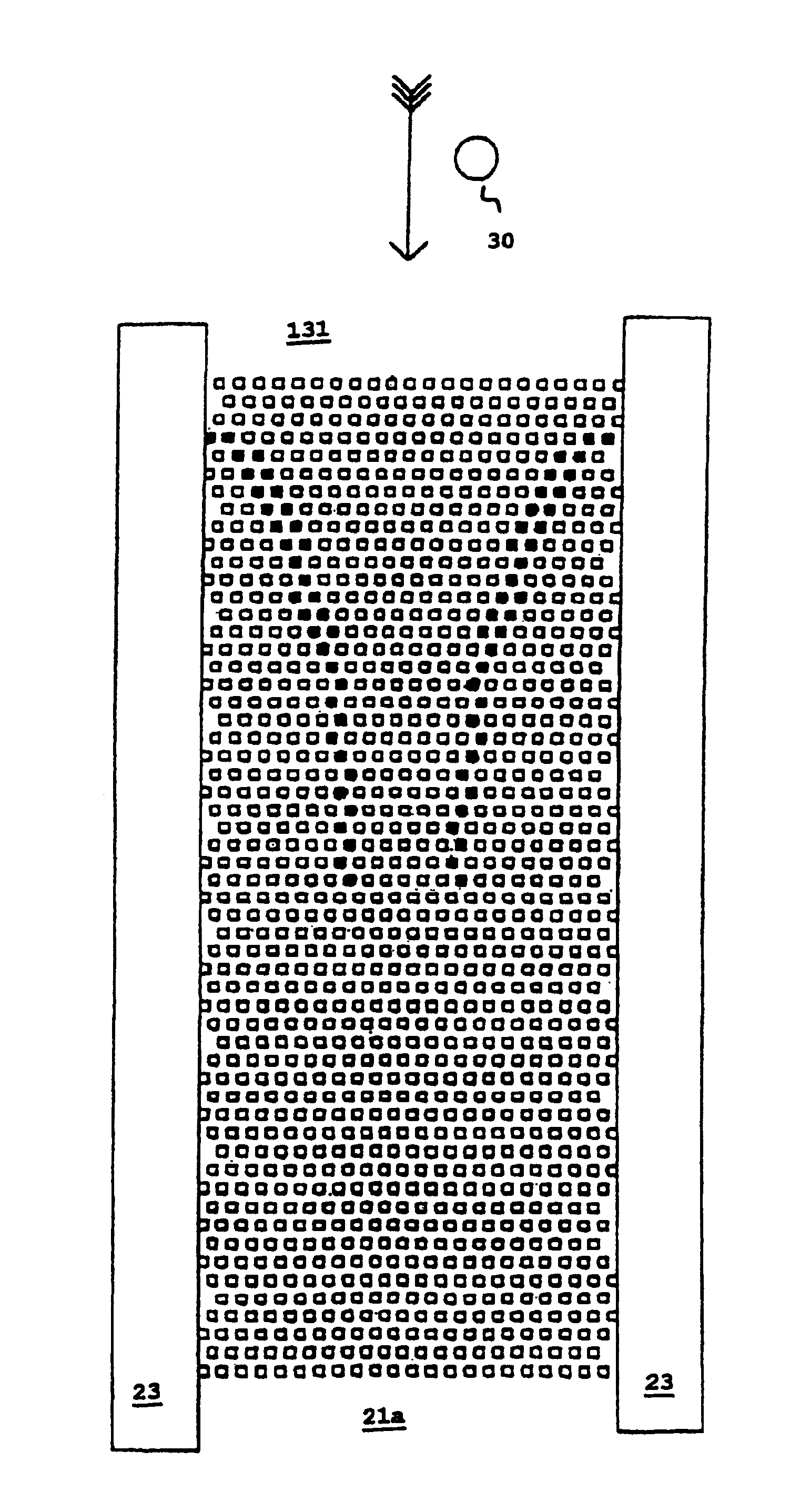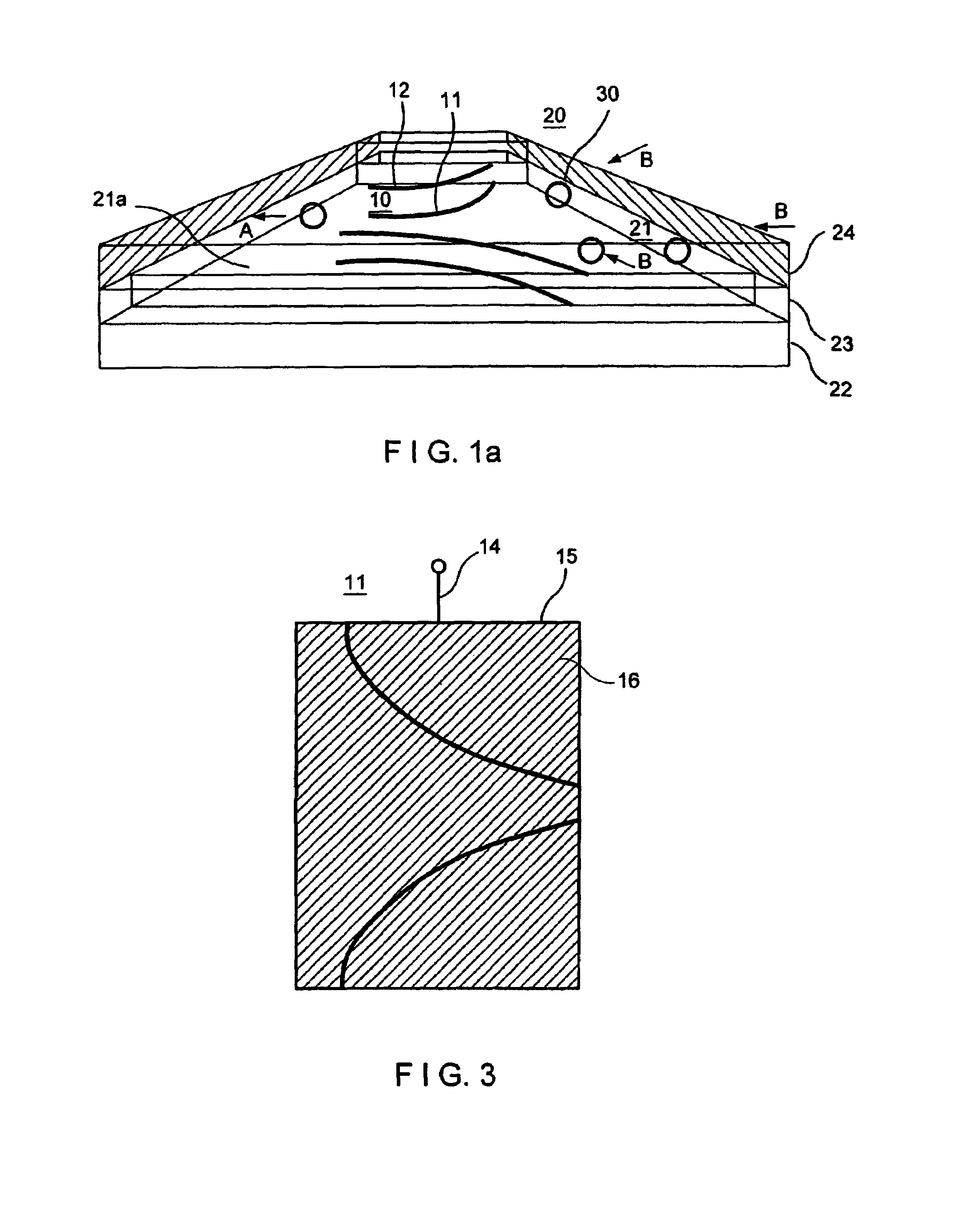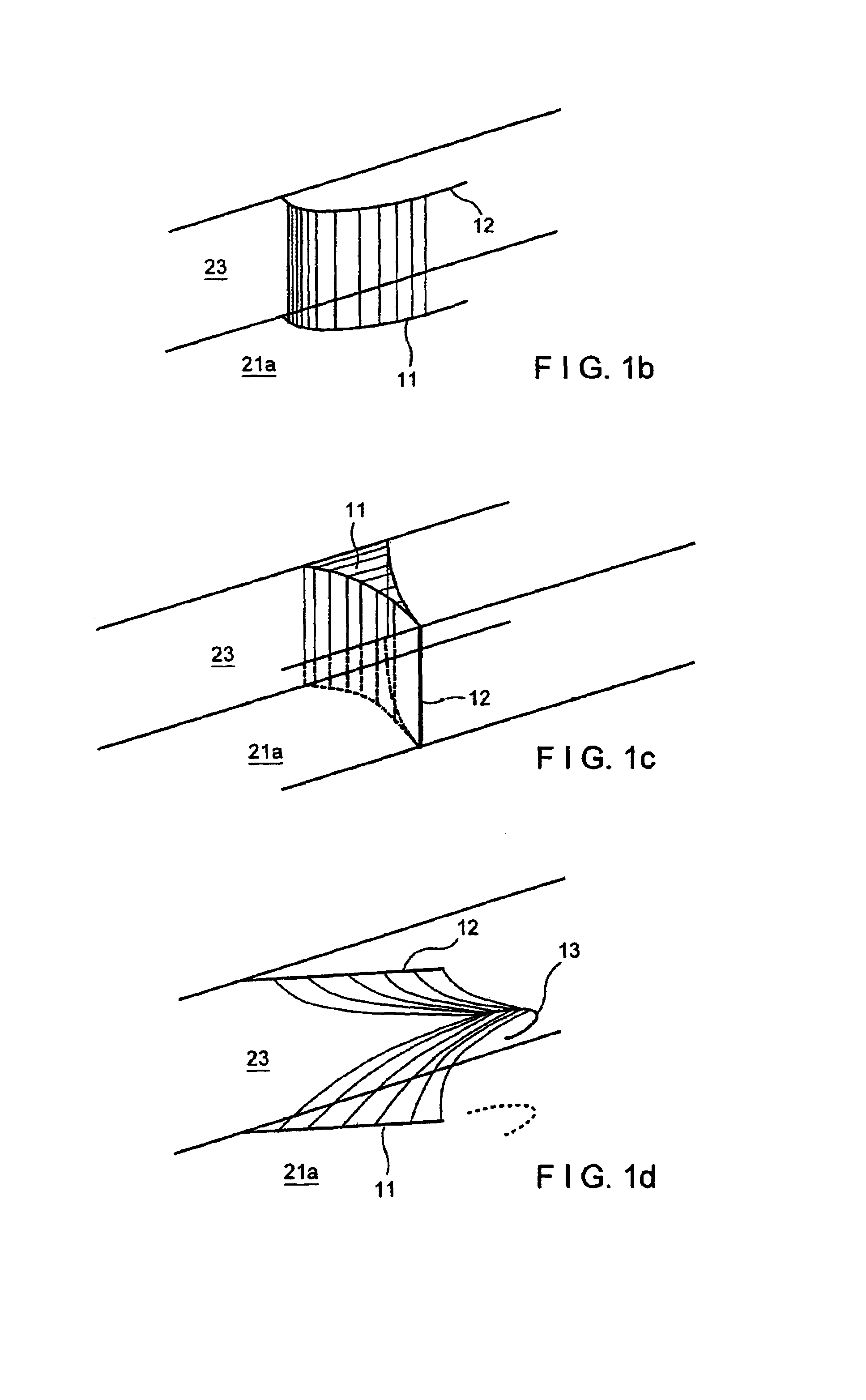Electrode arrangement for generating functional field barriers in microsystems
a technology of functional field barriers and electrodes, which is applied in the direction of electrostatic separators, diaphragms, electrolysis, etc., can solve the problems of limited ability to generate force gradients within the channel structure, the effect of generating polarisation forces, and the stability and longevity of microelectrodes
- Summary
- Abstract
- Description
- Claims
- Application Information
AI Technical Summary
Benefits of technology
Problems solved by technology
Method used
Image
Examples
Embodiment Construction
[0026]FIG. 1a diagrammatically shows an example of an embodiment of microelectrodes for generating field barriers in microchannels. The fluidic microsystem 20 is shown in sections in distorted perspective lateral view of a channel structure. The channel 21 is formed by two spacers 23 arranged at a distance on a substrate 22, spacers 23 supporting a cover part 24. The width and height of the channel is approx. 200 pm and 40 pm respectively but they can also be less. Such structures are for example made using process techniques of semiconductor technology which are known per see The substrate 22 forms the bottom surface 21a of the channel 21. Accordingly the cover surface (for reasons of clarity not specially emphasised) is formed by the cover part 24. The electrode arrangement 10 comprises microelectrodes 11, 12 attached to the bottom surface 21a or the cover surface. Each of the microelectrodes 11, 12 comprises curved electrode bands which are described in more detail below.
[0027]In...
PUM
| Property | Measurement | Unit |
|---|---|---|
| length | aaaaa | aaaaa |
| thickness | aaaaa | aaaaa |
| width | aaaaa | aaaaa |
Abstract
Description
Claims
Application Information
 Login to View More
Login to View More - R&D
- Intellectual Property
- Life Sciences
- Materials
- Tech Scout
- Unparalleled Data Quality
- Higher Quality Content
- 60% Fewer Hallucinations
Browse by: Latest US Patents, China's latest patents, Technical Efficacy Thesaurus, Application Domain, Technology Topic, Popular Technical Reports.
© 2025 PatSnap. All rights reserved.Legal|Privacy policy|Modern Slavery Act Transparency Statement|Sitemap|About US| Contact US: help@patsnap.com



